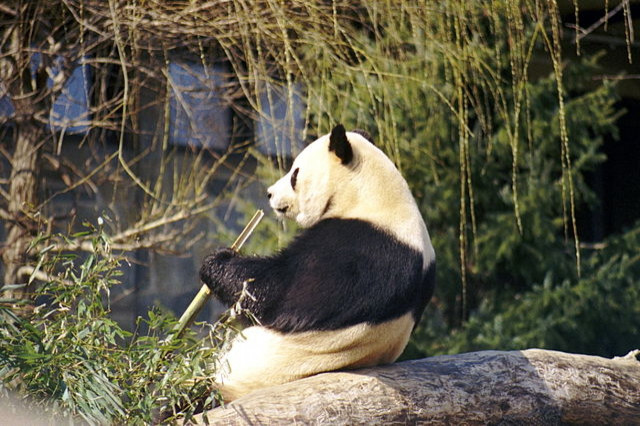Could Panda Poop Fuel The Future? Bamboo-Busting Bacteria Could Speed Biofuel Production

Innovative energy sources of the future: wind, solar, nuclear and … panda poop? For at least one scientist, it's not such a crazy idea.
"We have discovered microbes in panda feces might actually be a solution to the search for sustainable new sources of energy,” Mississippi State University researcher Ashli Brown said in a statement Tuesday. “It's amazing that here we have an endangered species that's almost gone from the planet, yet there's still so much we have yet to learn from it. That underscores the importance of saving endangered and threatened animals."
Brown is presenting her work at the annual meeting of the American Chemical Society in Indianapolis, Ind. Through their inspection of panda waste, Brown and her colleagues have identified more than 40 microorganisms living in the digestive tracts of Memphis Zoo pandas Ya Ya and Le Le that could transform biofuel production.
Using plant waste like corn stalks, corn cobs and switchgrass to make biofuels instead of more easily broken down substances such as corn kernels or soybeans is the dream, since that would mean ethanol production wouldn’t be competing with food production. But creating ethanol from these materials requires heat, acids or high pressure to break down tough strands of cellulose found in plant cell walls. As a result, this kind of biofuel is costlier to make at present. But hope may come out of a panda’s behind.
The panda is a natural at breaking down cellulose. He has to be, since his bamboo diet is rich in the tough strands of plant matter. Some of the digestive bacteria that Brown and her students have found are similar to the microorganisms found in wood-eating termites. It may be possible to use the bacteria as part of a biofuel production process, or merely the bacterial enzymes themselves.
"The time from eating to defecation is comparatively short in the panda, so their microbes have to be very efficient to get nutritional value out of the bamboo," Brown said. "And efficiency is key when it comes to biofuel production -- that's why we focused on the microbes in the giant panda."
Studying the panda's gut will also benefit conservation efforts along with biofuel production, Brown says.
"These studies also help us learn more about this endangered animal's digestive system and the microbes that live in it, which is important because most of the diseases pandas get affect their guts," Brown says. "Understanding the relationships between the microbes and the pandas, as well as how they get their energy and nutrition, is extremely important from a conservation standpoint, as fewer than 2,500 giant pandas are left in the wild and only 200 are in captivity."
Brown and her colleagues are also looking to enlist other types of pandas in the effort. They’re working on getting a good luck at the feces of red pandas (which are not related to the giant panda, but which do eat bamboo) in the Memphis Zoo. They’re also trying to collaborate with a pair of Canadians -- Er Shun and Da Mao -- two pandas that arrived at the Toronto Zoo earlier this year.
© Copyright IBTimes 2024. All rights reserved.





















